While Athens is predominantly known for its historical heritage, there are signs of a modern metropolis at every turn. The Greek capital seamlessly blends ancient monuments and old commercial arcades with contemporary art galleries, street art and high fashion. What I found particularly appealing is its geography - everything worth exploring is conveniently situated in the historic city center, easily reachable on foot. So even a few days are enough to soak in the city’s famous monuments and quaint neighbourhoods. Here’s some of the ‘must do’ sites and local experiences if you have just two days in Athens.
Want to start in the most Greek way? Grab a koulouri (sesame bread) from any of the street vendors and a coffee on the go!

Scale up the Lycabettus Hill
Why not start at the top? Lycabettus Hill perched at 900 feet above sea level is the highest point in Athens and also one of the most romantic. While a walk up the winding, lush pine forest is undoubtedly picturesque, tackling it can be a test of endurance and a formidable challenge, especially during the summer months. I chose the funicular a small, cute train to take me to the top. The ride is barely three minutes inside a closed tunnel. Sadly, there are no views on the way up or down.
I reached the top at twilight just when the lights of the Acropolis lit up and the view was spectacular. The vantage point also serves as a reminder of Athens' coastal setting, providing breath taking views across the Aegean Sea. After taking in the views and a million pictures I headed to Orizontes restaurant for dinner with more sweeping across Athens. There’s also a small chapel on top and an amphitheatre that regularly hosts concerts, theatrical performances and dance shows.
Note: The hike takes 30 minutes to an hour depending on the pace and fitness level. The funicular runs every 30 minutes.
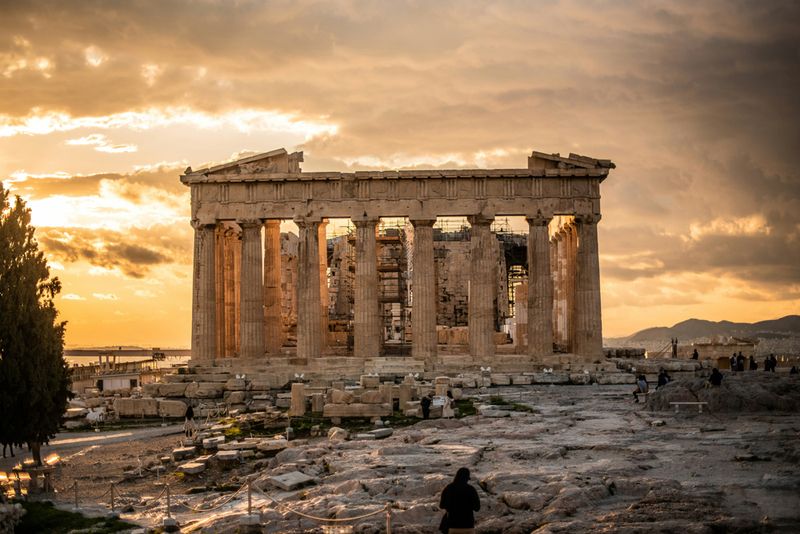
Get mesmerised by the Acropolis and Parthenon
What would a visit to Athens be without going to the Acropolis to see the Parthenon? Annually, millions of travellers ascend the hill to marvel at the magnificent 2500-year-old monument that graces the summit. But no matter how many pictures you may have seen of the Parthenon, nothing prepares you for the immensity and grandeur of the structure which took nine years to build and was completed in 438 BC. Originally a temple, over the years the Parthenon evolved into a church, then a mosque and ultimately a storage facility for Turkish gunpowder.
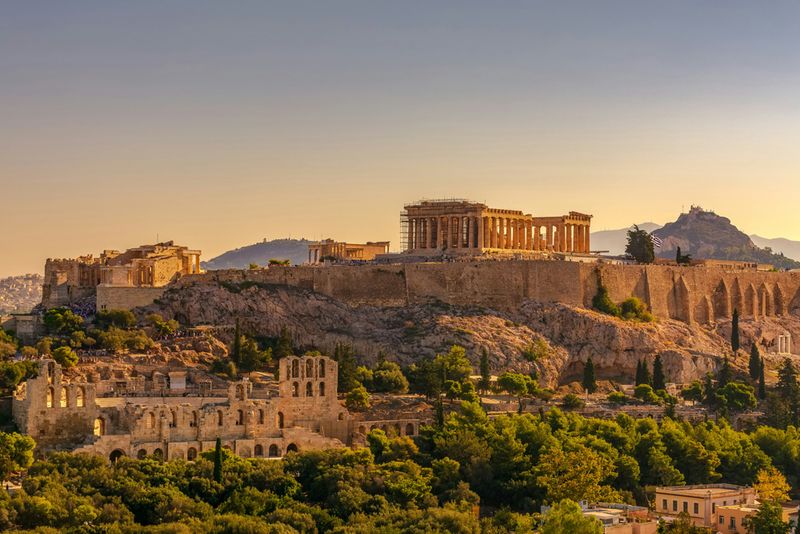
In 1687 the Venetians blew it up. That’s not all. In 1801, Thomas Bruce a British ambassador plundered a substantial portion of the temple's pillars and shipped them to UK. The loot now sits in the British Museum! Though the Parthenon never recovered from this destruction on-going restoration work has brought back some of its glory. “The Acropolis is very important to us. That’s why we don’t have high rises in Athens so that everyone can see the Acropolis from everywhere and refer to it,” says Danai Bogiatzi a senior tour guide with This is Athens.
Just around the corner is the Acropolis Museum which houses all the artifacts discovered at the Acropolis. One of the highlights is the glass floor where you can walk over the ruins of an ancient neighbourhood.
Tip: Expect big crowds during peak season (April-October). The best time to visit the Acropolis is at opening time in the morning or two hours before closing. Stop for a mid-morning snack of ‘kourou’ (a buttery cheese pie), at Takis Bakery situated under the shadow of the Acropolis. This quintessential Athenian breakfast makes for an great treat after the climb up
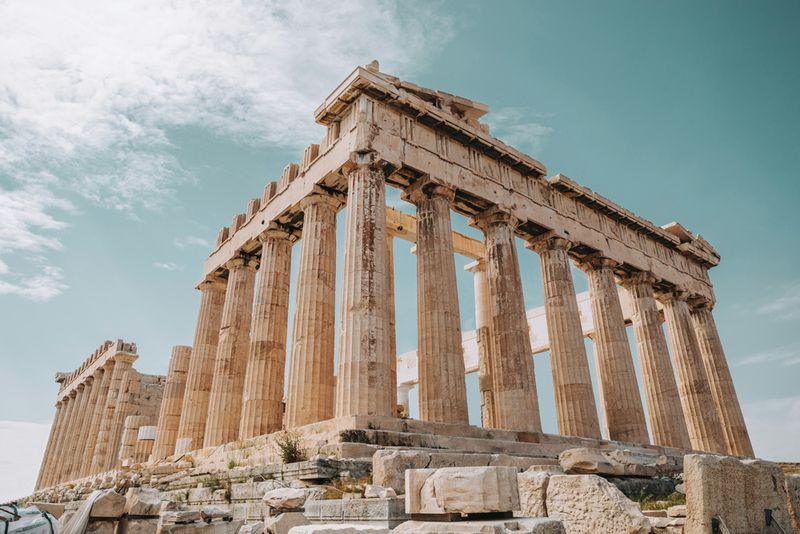
Discover the Ancient Greek Agora
Nestled at the foot of the Acropolis is The Agora which served as the religious, cultural, social and commercial center of Athenian life. It was in this lively space that Socrates shared his philosophical teachings and in AD 49, St. Paul arrived to spread Christianity. Today, the site offers a serene escape, featuring the impressive Temple of Hephaistos, a noteworthy museum and a 11th-century Byzantine Church. “Agora means a market. In the ancient times they used to write all the news and hang on the walls here,” explains Bogiatzi. A leisurely stroll here is like embarking on a historical odyssey.
Coffee Break at Mokka
Greeks and their love for coffee becomes apparent as soon as you land in the city. There are people everywhere lingering over a single cup of coffee for hours. Mokka, a century-old coffee roastery on Athinas Street , is just the place to join in. The coffee here is prepared in a ‘briki’ a long-handled copper pot nestled in hot sand. Be warned: it’s strong!

Wander around the Central Market (Varvakios Agora)
Prepare for a sensory overload of colours, fragrances and sounds as butchers, fishmongers and vegetable vendors engage in a lively competition at the Central Market. It is also an ideal place to explore local products such as olive oil, olives, cheese and spices. The small unassuming restaurants here serve local dishes crafted from the market’s fresh produce. Don’t miss a meal at Diporto (meaning two doors) a local legend. The service is brusque but the food is fantastic and served with retsina (white wine made with pine).

Get lost in the Plaka
Hopping from one ancient ruin to another only to land at a museum can be an overdose of history. The Plaka makes for a beautiful respite. Littered with neo-classical buildings, lively tavernas, brightly coloured homes and quaint cafes, the Plaka is undoubtedly one of the most picturesque parts of Athens.
It’s also the most touristed but with a heart nonetheless. Strolling around its narrow lanes with brightly painted doors, bougainvillea spilling from colourful balconies and graffiti covered passageways feels very mysterious… like you have stumbled upon a secret!
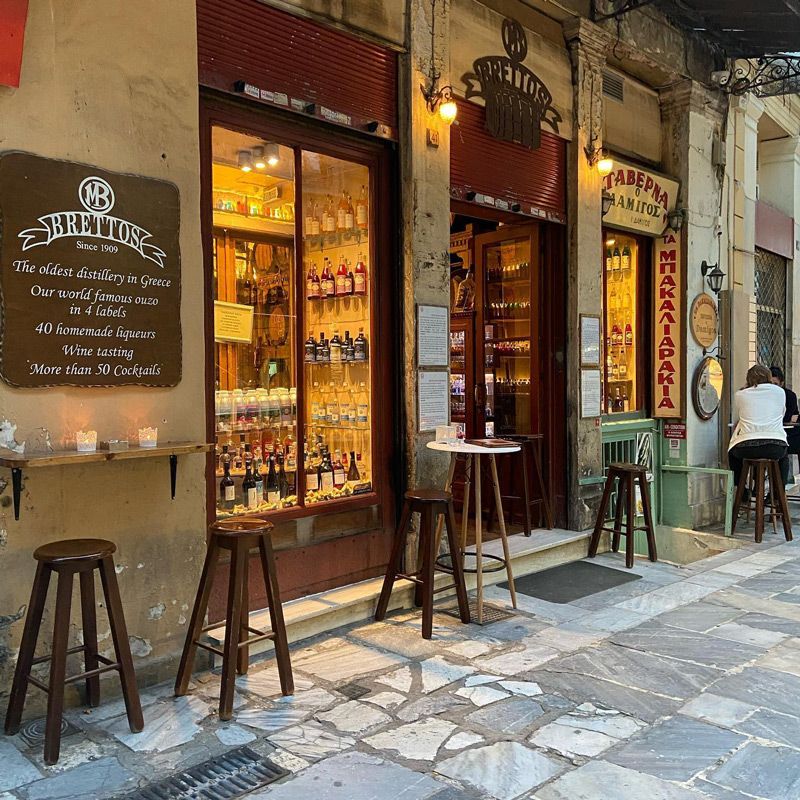
Sitting on the steps of Yiasemi a local restaurant and tucking into pies is the best way to wrap up a tour in Plaka. But not before you down a few shots of ouzo (anise-flavoured aperitif widely consumed in Greece) at Brettos the city’s oldest distillery and a gelato at Arte. Plaka is also a good place to shop for souvenirs, jewellery and local Greek products.
Tip: Those looking to take home some ouzo should check out Angelo, while Elaias Gi has good quality Greek olive oil
After Hours in Athens
Athens truly reveals its magic at night. It has more bars than anyone could explore in one visit. Varnava Café in Pangrati is the place to go for people watching with a nice cocktail or a glass of wine. Grab a table outside under one of the big trees and enjoy a charcuterie plater. If you are looking to let loose (read get dancey) Tsin Tsin near Exarchia is a great spot. This is where half of Athens gathers to have a good time. The décor is eclectic and the music selection interesting (David Bowie, Madonna, Percy Faith). But the most favourite spot of Athenians is Dentro All Day Bar in Voula’s square. Curled up under a eucalyptus tree it’s always buzzing with young people and families enjoying a good conchiglioni (shell pasta) hot dogs and bruschetta.
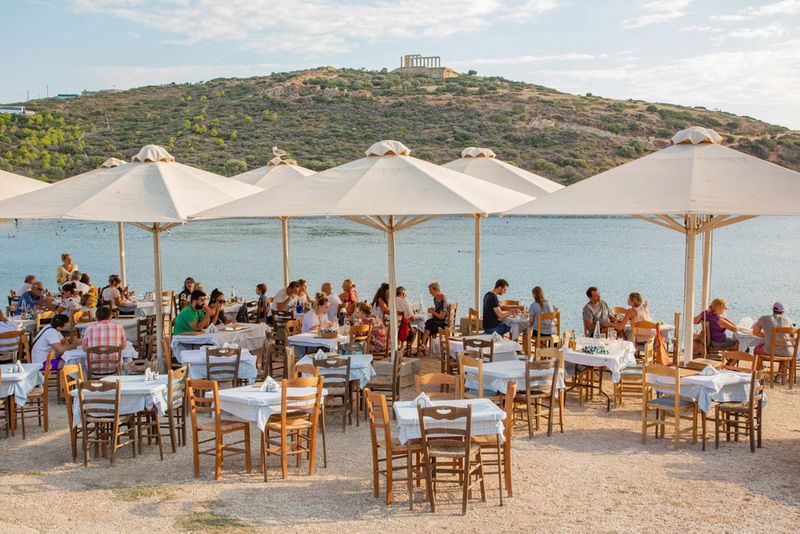
Discover the Athenian Riviera
Idyllic palm-fringed beaches and azure waters may not be the first things associated with Athens but it’s one of the many delights of the city. The Athenian Riviera which covers the beautiful Athens coast between Piraeus and Cape Sounion is a short bus ride from the city centre. Littered with stunning beaches, relaxed cafes, fresh fish tavernas, nightclubs, water sports clubs and outdoor cinemas, this coastline certainly has something for everyone. You could just chill on the beach, hire a small boat with a driver and explore the tiny inlets and islands or spend the day paddle-boarding. The biggest decisions will be which seaside taverna to eat at. Garbi is immensely popular for its fresh catch. “The best way to make your trip memorable is to take a dip in the water – it’s clean, clear and very safe,” assures Bogiatzi.
Tip: Take the tram from Syntagma Square to Voula

Eat like an Athenian
Eating in Athens is a wonderful, unhurried affair. Greeks love eating out and sharing copious meals with friends and family when the sun is out. From freshly baked pies to tantalising fish delicacies, rustic salads and decadent loukoumades for desserts, foodies are spoilt for choice in the Greek capital. Souvlaki – Greece’s most popular street food is the way to go. What’s not to like about grilled meat wrapped in pita bread with sliced tomatoes, onions, and yogurt? Each souvlaki joint employs unique techniques to make their wraps distinct from the competition. Some enhance the flavour with tzatziki (yogurt dip with grated cucumber and garlic), while others opt for plain, thick yogurt.

Another must try is horiatiki - traditional Greek salad of tomatoes, cucumbers, onions and three beloved Greek ingredients: feta cheese, olives and a generous drizzle of olive oil. A side of freshly baked bread is perfect for mopping up all the flavourful juices from the tomatoes, cucumbers and the tangy vinegar dressing. But nothing beats the fresh seafood. I still dream of the Garides Saganaki a dish of juicy prawns in a garlic-infused tomato sauce and topped with creamy, melted feta cheese. My favourite way to end a meal in Athens was the deliciously sticky loukoumades fried donut balls topped with honey syrup from Ktistakis on busy Sokratous Street.

Visiting Athens? Here’s are some tips
- The best time to visit Greece is March, April, May, September, October and November.
- Greece’s currency is the euro. All major credit cards are widely accepted in Greece.
- The metro is the simplest and quickest way to navigate the city. The bus and the tram are perfect for reaching the Riviera. If you need a taxi, download the ‘Free Now’ taxi app (like Uber).
- Remember to pack your most comfortable shoes as there will be a lot of exploration on foot.
- There is no service charge at bars and restaurants so tipping is welcome. Anywhere between 5-15 percent is the norm.



